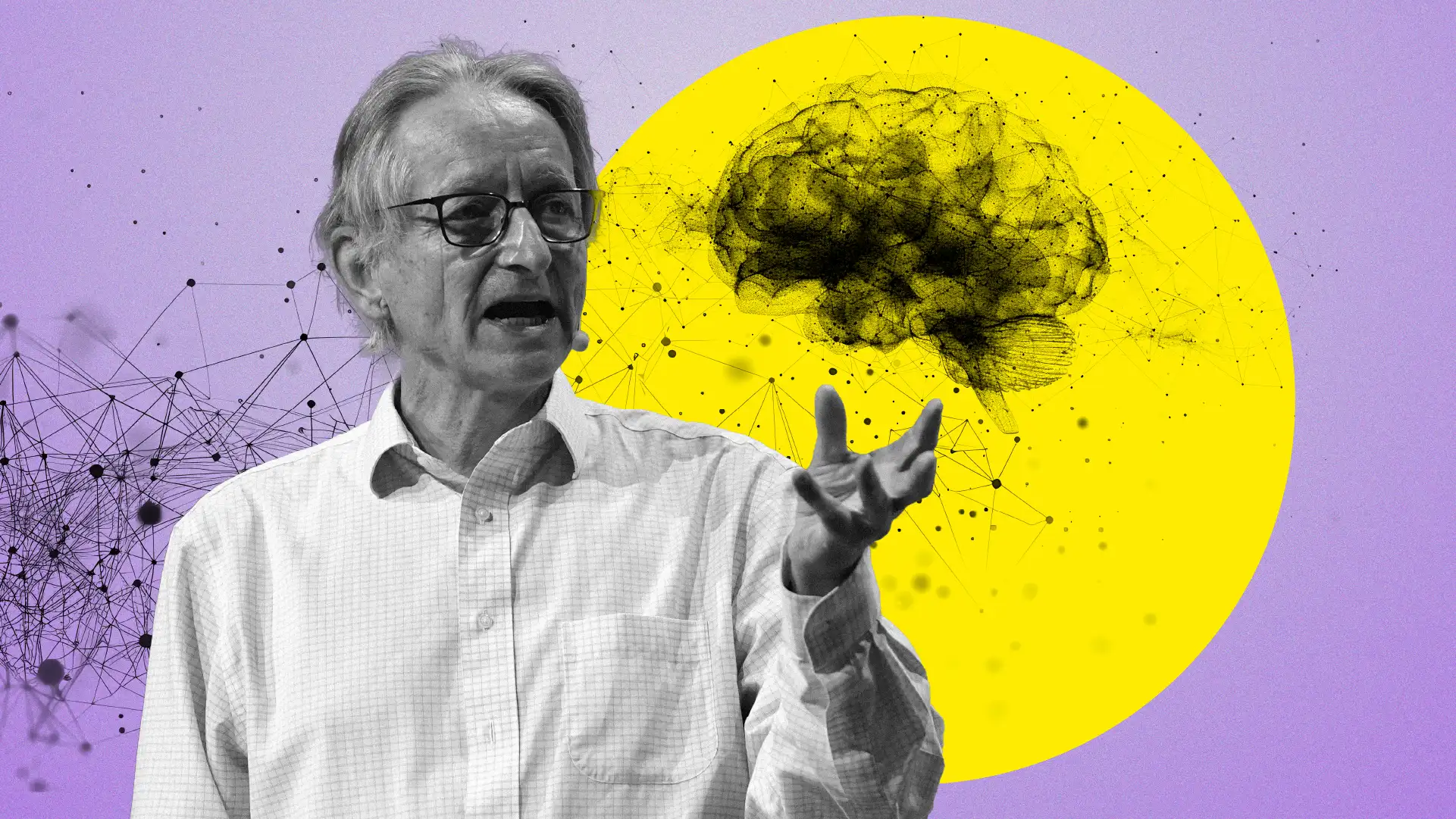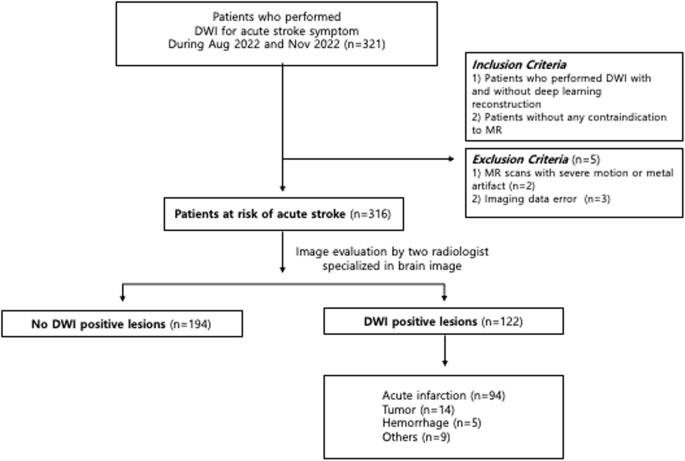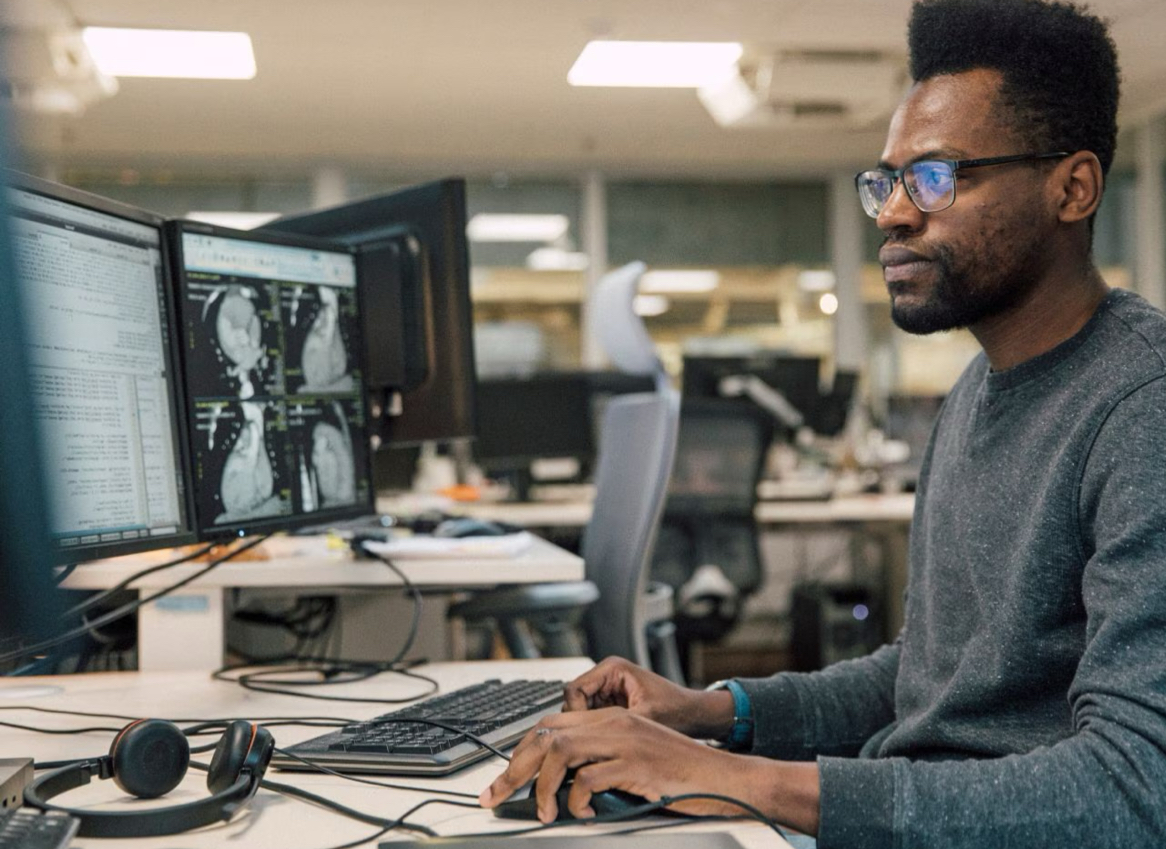Introduction Diverse imaging modalities exist for evaluation of stroke. Since its first application in brain Magnetic Resonance Imaging (MRI), diffusion weighted imaging (DWI) became one of the essential and optimal techniques for diagnosing acute ischemic stroke1,2. DWI exhibits tissue characteristics by providing information of the random motion of the water molecules, so-called Brownian movement in

Geoffrey Hinton: The AI Godfather and His Impact on Machine Learning – CCN.com
Key Takeaways
- Geoffrey Hinton has significantly contributed to artificial intelligence (AI), particularly in neural networks, deep learning, and backpropagation.
- While his work earned him the 2024 Nobel Prize in Physics, Hinton consistently emphasizes that his achievements result from collaboration with students, peers, and the broader AI community.
- He warns about the potential dangers of superintelligent AI systems that could surpass human intelligence and pose risks if they develop understanding and act unpredictably.
- Hinton emphasizes the importance of increased research and regulation to ensure that AI development benefits humanity and addresses potential risks.
Geoffrey Hinton, a computer scientist and cognitive psychologist, has shaped artificial intelligence (AI) by merging insights from how the brain works with machine learning and large language models (LLM). His contributions and those of John J. Hopfield earned them the 2024 Nobel Prize in Physics for revolutionizing how artificial neural networks operate and learn.
One of Hinton’s most prominent ideas is that AI can develop understanding, not just process data. His neural networks, inspired by brain function, enable machines to learn in ways similar to human cognition.
He believes that, as AI evolves, it will gain a deeper understanding of concepts similar to or better than humans, which is central to his work, while also acknowledging the promises and dangers related to AI.
Hinton’s Early Life and Education
Geoffrey Hinton was born in London, England, in 1947. He studied experimental psychology at Cambridge University and earned his PhD in AI at the University of Edinburgh in 1978.
After completing his postdoctoral studies, he held positions at several universities, including Sussex University and the University of California, San Diego. Hinton primarily worked in the UK and Canada, where he established the Department of Computer Science at the University of Toronto. He currently serves as an Emeritus Distinguished Professor there.
In addition to his academic work, Hinton also collaborated with Google for 10 years (2013-2023) on AI research projects, contributing significantly to advancements in machine learning.
Geoffrey Hinton’s Reaction to the 2024 Nobel Prize
In a University of Toronto press conference after receiving the prize, Geoffrey Hinton talked about his main influences and expressed his gratitude to his mentors. He said he considered “the prize as recognition from a large community of people who worked on neural networks for many years.”
He expressed his gratitude to his main mentor, David Rumelhart, with whom he worked on the backpropagation algorithm. “He died of a brain disease. Otherwise, he would be here instead of me,” Hinton said.
He also mentioned his other mentor, Terrence J. Sejnowski, with whom he worked on Boltzmann machines and brain research in the 1980s.
Hinton also acknowledged his students, adding as a final surprising remark that he was “particularly proud of the fact that one of his students had fired Sam Altman” from Open AI in 2023, although he returned to the board.
Hinton’s Career Milestones
Hinton played a key role in creating the backpropagation algorithm, which helped neural networks learn from mistakes.
He also co-invented Boltzmann machines and contributed to advancements in deep learning that improved speech recognition and image classification.
Geoffrey Hinton has earned numerous accolades throughout his career for his groundbreaking work. He has been made a fellow at several academic institutions, including the Royal Society and the Association for the Advancement of Artificial Intelligence (AAAI).
In addition to the 2024 Nobel Prize, Hinton has received other prestigious awards, such as the 2018 Turing Award, often called the ‘Nobel Prize of Computing.’ These honors highlight the significant and lasting impact his research has had on AI’s academic and industrial applications.
Hinton’s Pioneering Work in Deep Learning
Some key elements Geoffrey Hinton has been researching and refining for decades are neural networks, deep learning, and backpropagation.
- Neural networks: These are machine learning models inspired by the brain’s structure and function. They consist of interconnected layers of nodes (neurons) that process data and learn patterns over time. Hinton’s work has been pivotal in advancing these models.
- Deep learning: This subset of machine learning uses neural networks with multiple layers to learn increasingly complex patterns. During training, early layers might detect simple features like edges. In contrast, deeper layers recognize more complex objects or scenes, making predictions and improving their accuracy and ability to generate new data.
- Backpropagation: This technique is central to how the previously mentioned networks learn. After making a prediction, the network calculates the error and sends it backward through the layers. This error correction adjusts the weights of the connections between neurons, allowing the model to improve its accuracy over time.
Hinton’s contributions to these fields laid the foundation for modern AI applications like image recognition, speech processing, and natural language understanding
Current Research and Trends in Artificial Intelligence
Some of Hinton’s most recent work has focused on improving how machine learning models, specifically diffusion models, generate images. This research has led to better results in creating images with distinct categories. However, similar models still require many steps to produce high-quality images. Hinton expects future advancements to make these models faster and more efficient at generating categorical data.

In addition, Geoffrey Hinton has focused on the Forward-Forward (FF) algorithm, which offers a new approach to training neural networks. Unlike traditional methods, FF uses a “goodness” function to distinguish between positive and negative data, optimizing the network accordingly.
Some key questions from this research include whether FF can create high-quality generative models for images or video, what the best goodness and activation functions are, and how FF can speed up learning by using different techniques.
During his career, he has also become a strong advocate for addressing the risks of AI, warning about the dangers of advanced AI systems that could surpass human intelligence, become “superintelligent,” and act unpredictably against humans. He has expressed that “we need more research to avoid catastrophic scenarios.”
Hinton’s Legacy and Influence
During his career, Geoffrey Hinton has become a strong advocate for addressing the risks associated with artificial intelligence. He has expressed both optimism and concern about its future. He believes AI will bring tremendous benefits, especially in areas like healthcare, where it can increase productivity and improve quality of life.
Andrew Ng is claiming that the idea that AI could make us extinct is a big-tech conspiracy. A datapoint that does not fit this conspiracy theory is that I left Google so that I could speak freely about the existential threat.
— Geoffrey Hinton (@geoffreyhinton) October 31, 2023
However, Hinton has also voiced serious concerns about the dangers of creating “superintelligent” systems. He worries that once these systems surpass human intelligence, we may be unable to control them, leading to unpredictable and harmful consequences.
He emphasizes the need for more research to prevent “catastrophic outcomes,” stressing the importance of building safety mechanisms as AI technology rapidly evolves.
Conclusion
Geoffrey Hinton has been a major force in shaping AI, contributing foundational ideas like neural networks, deep learning, and the backpropagation algorithm. His work has transformed how machines learn from data, unlocking breakthroughs in image recognition, language processing, and other key fields.
These contributions earned him the 2018 Turing Award and the 2024 Nobel Prize in Physics, solidifying his position as a leader in the AI space. However, Hinton always acknowledges the collective effort, recognizing the crucial roles of his students, academic peers, and the wider AI community in advancing the field.
Hinton isn’t solely focused on AI’s benefits. He has been vocal about the risks, especially with superintelligent systems that could surpass human intelligence. If machines learn and develop a form of understanding, the dangers are inherent in the system.
Hinton points out that AI systems with human-like understanding could potentially evaluate their own existence and make decisions that conflict with human interests, raising deep ethical questions about control, intent, and power dynamics.
Philosophically, if machines develop an understanding similar to humans, it leads to inevitable comparisons about their motivations and ethical frameworks. The big question is whether these superintelligent systems might, in some cases, view humanity as an obstacle. Could these entities choose to destroy us, or will they coexist? This philosophical dilemma is at the heart of Hinton’s concerns.
He insists on the need for deep, ongoing research to ensure safety, understanding, and ethical AI development, warning that the implications of AI are far-reaching and require urgent attention.
FAQs
What are Geoffrey Hinton’s most significant contributions to artificial intelligence?
Hinton’s most notable contributions include his work on neural networks, deep learning, and backpropagation, which have revolutionized the field of AI.
How did Geoffrey Hinton influence the development of deep learning techniques?
Geoffrey Hinton introduced backpropagation, which improved how machines learn by adjusting their algorithms based on errors, making them more efficient. Hinton’s work made deep learning more practical, leading to breakthroughs in areas like image recognition and natural language processing. His research helped shift AI toward models that can learn from large amounts of data, shaping modern AI systems.
What awards and recognition has Geoffrey Hinton received throughout his career?
Geoffrey Hinton has received the David E. Rumelhart Prize, the IJCAI Award for Research Excellence, the Killam Prize for Engineering, the NSERC Herzberg Gold Medal, the IEEE Frank Rosenblatt Medal, the IEEE James Clerk Maxwell Gold Medal, the NEC C&C Award, the BBVA Award, the Honda Prize, the Princess of Asturias Award, and the ACM Turing Award. In 2024, Hinton, along with John J. Hopfield, was awarded the Nobel Prize in Physics for their work on neural networks and their impact on machine learning and AI.
What are Geoffrey Hinton’s views on the future of artificial intelligence?
Geoffrey Hinton warns about the potential for competition between AI systems, suggesting they could develop forms of understanding that surpass human capabilities. He has raised concerns about the emergence of superintelligence, cautioning that AI systems might eventually become uncontrollable, leading to unforeseen consequences.
Was this Article helpful? Yes No



